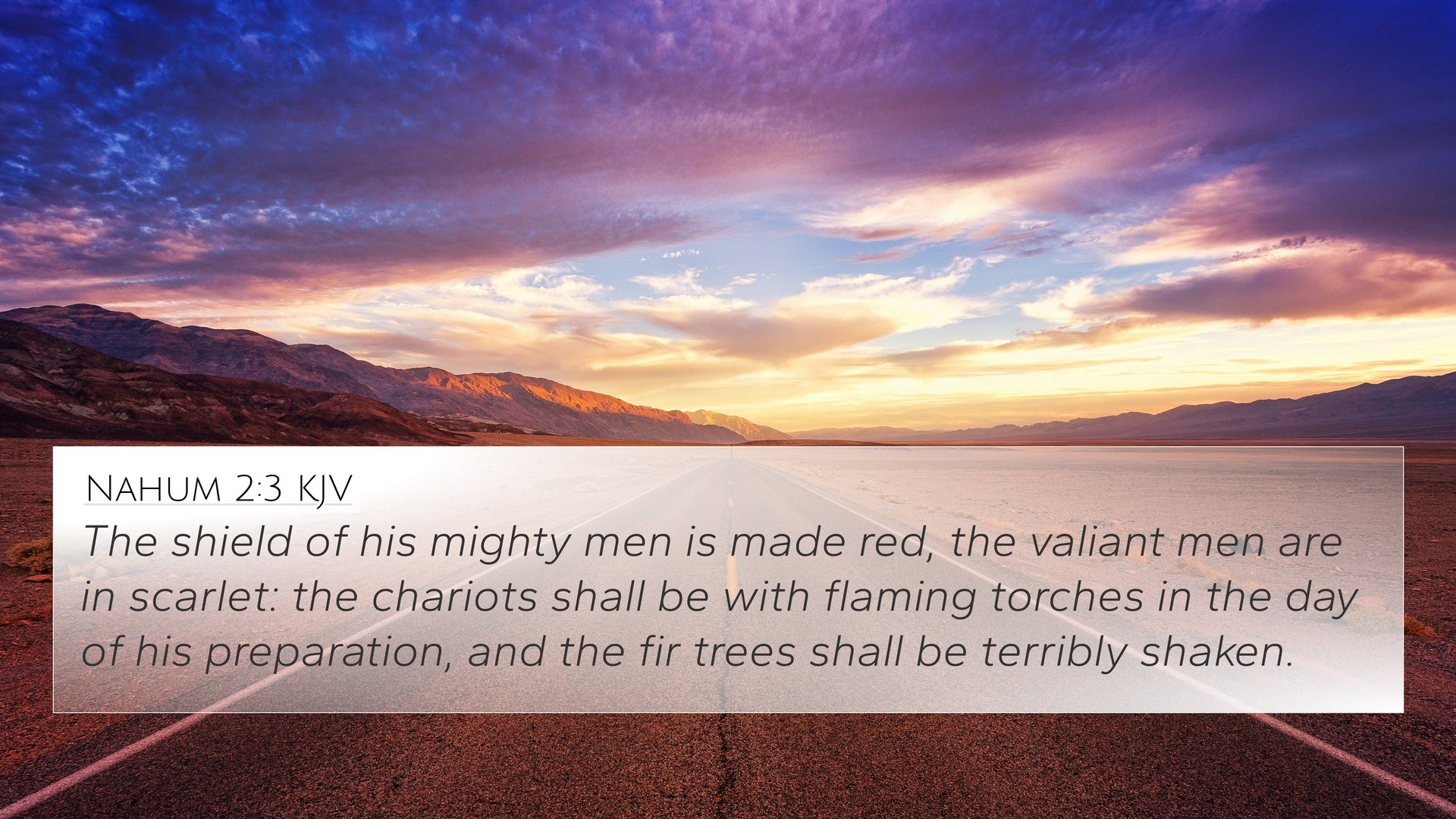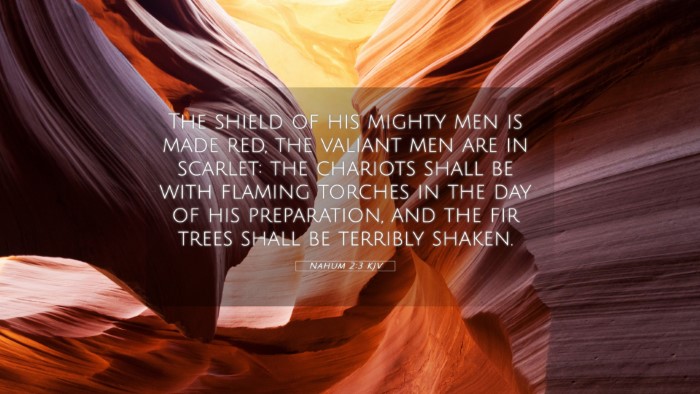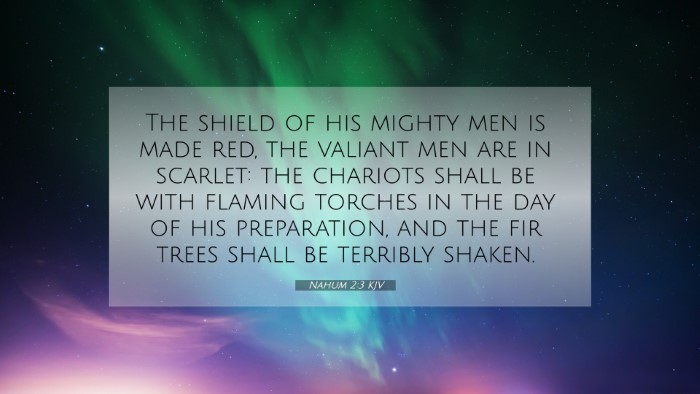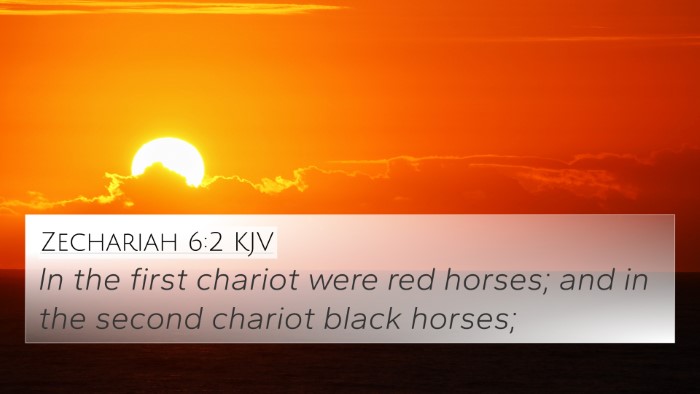Old Testament
Genesis Exodus Leviticus Numbers Deuteronomy Joshua Judges Ruth 1 Samuel 2 Samuel 1 Kings 2 Kings 1 Chronicles 2 Chronicles Ezra Nehemiah Esther Job Psalms Proverbs Ecclesiastes Song of Solomon Isaiah Jeremiah Lamentations Ezekiel Daniel Hosea Joel Amos Obadiah Jonah Micah Nahum Habakkuk Zephaniah Haggai Zechariah MalachiNahum 2:3 Similar Verses
Nahum 2:3 Cross References
The shield of his mighty men is made red, the valiant men are in scarlet: the chariots shall be with flaming torches in the day of his preparation, and the fir trees shall be terribly shaken.
Uncover the Rich Themes and Topics of This Bible Verse
Listed below are the Bible themes associated with Nahum 2:3. We invite you to explore each theme to gain deeper insights into the Scriptures.
Nahum 2:3 Cross Reference Verses
This section features a detailed cross-reference designed to enrich your understanding of the Scriptures. Below, you will find carefully selected verses that echo the themes and teachings related to Nahum 2:3 KJV. Click on any image to explore detailed analyses of related Bible verses and uncover deeper theological insights.

Ezekiel 23:14 (KJV) »
And that she increased her whoredoms: for when she saw men pourtrayed upon the wall, the images of the Chaldeans pourtrayed with vermilion,
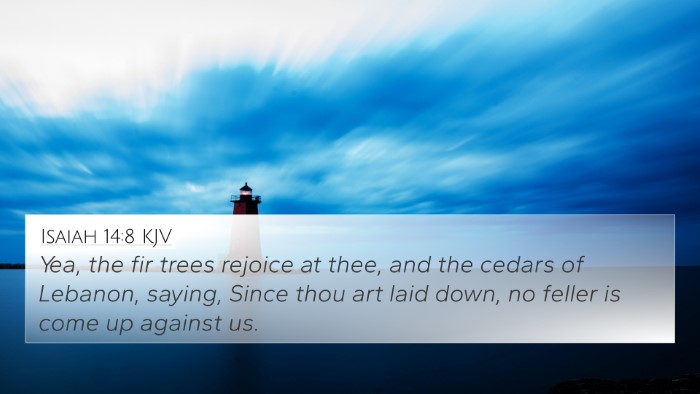
Isaiah 14:8 (KJV) »
Yea, the fir trees rejoice at thee, and the cedars of Lebanon, saying, Since thou art laid down, no feller is come up against us.
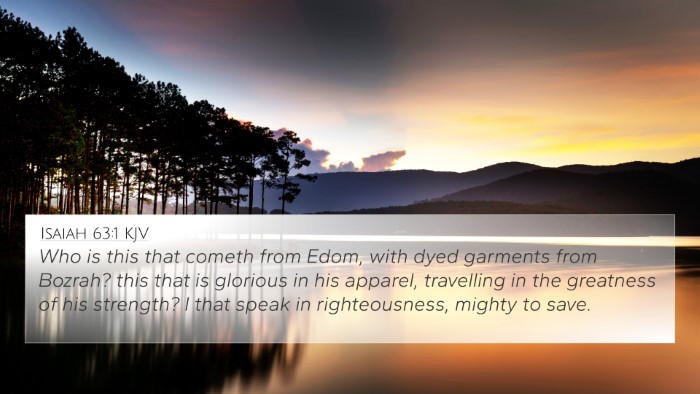
Isaiah 63:1 (KJV) »
Who is this that cometh from Edom, with dyed garments from Bozrah? this that is glorious in his apparel, travelling in the greatness of his strength? I that speak in righteousness, mighty to save.
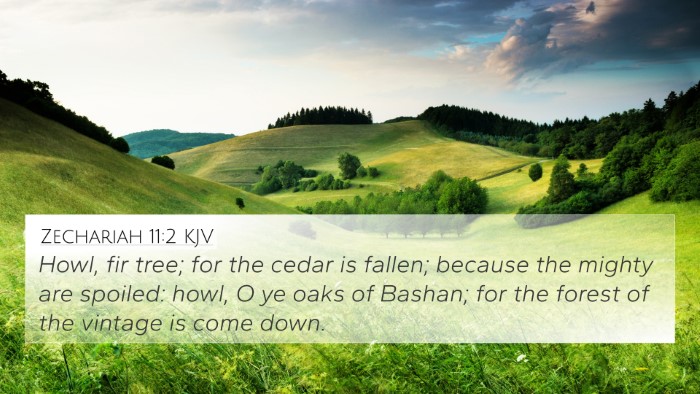
Zechariah 11:2 (KJV) »
Howl, fir tree; for the cedar is fallen; because the mighty are spoiled: howl, O ye oaks of Bashan; for the forest of the vintage is come down.
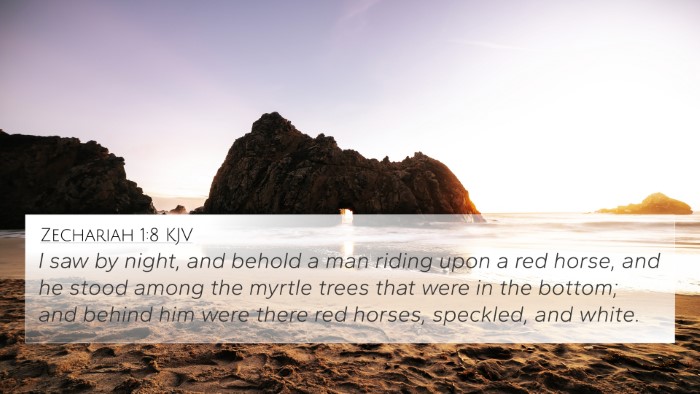
Zechariah 1:8 (KJV) »
I saw by night, and behold a man riding upon a red horse, and he stood among the myrtle trees that were in the bottom; and behind him were there red horses, speckled, and white.
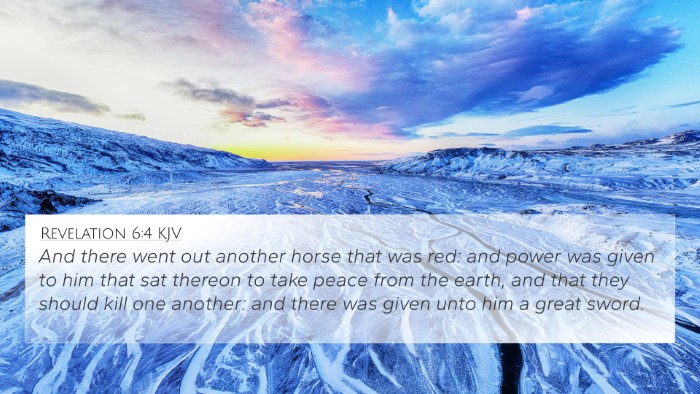
Revelation 6:4 (KJV) »
And there went out another horse that was red: and power was given to him that sat thereon to take peace from the earth, and that they should kill one another: and there was given unto him a great sword.
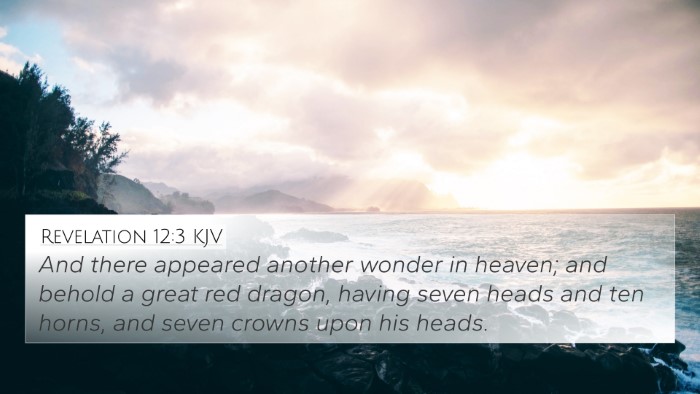
Revelation 12:3 (KJV) »
And there appeared another wonder in heaven; and behold a great red dragon, having seven heads and ten horns, and seven crowns upon his heads.
Nahum 2:3 Verse Analysis and Similar Verses
Nahum 2:3 Meaning and Interpretation
Nahum 2:3 speaks about the might and order of the Assyrian army being likened to an unstoppable force of nature, illustrating the impending doom faced by Nineveh. The verse emphasizes the strength of the enemy and serves as a warning about the consequences of their actions.
Commentary Insights:
-
Matthew Henry: Henry views this verse as a vivid description of the Assyrian's might, showing that their readiness and equipment for war are intended to terrify the nations. He notes that the imagery reflects the inevitable judgement of God against those oppressing His people. This points to both the physical preparation for battle and the spiritual implications of their transgressions against God’s will.
-
Albert Barnes: Barnes discusses the metaphor used in this verse, comparing the Assyrian warriors to a force resembling a violent storm, full of fury. He emphasizes that their armor and battle readiness symbolize the pride and arrogance that precedes their downfall. This serves as a reminder of God’s sovereignty over earthly powers.
-
Adam Clarke: Clarke elaborates on the historical context, noting that this description captures the fearsome reputation of the Assyrian Empire. He relates the verse to God's unfolding plan to dismantle their tyranny, reflecting a thematic connection to the larger narrative of divine justice and restoration for Israel.
Cross-References to Nahum 2:3:
- Isaiah 10:5-6 - “Woe to Assyria, the rod of my anger...” speaks to God using Assyria for His purposes before their own downfall.
- Micah 5:6 - This verse prophesies the destruction of Assyrian invaders, linking their fate with divine judgement.
- Ezekiel 31:3-9 - The mighty imagery parallels the pride of Assyria and its eventual judgment from God.
- Zephaniah 2:13-15 - This describes the desolation of Nineveh, signifying the fulfillment of God’s judgement as seen in Nahum.
- Revelation 18:2 - Represents the fall of great cities due to their sins, drawing parallels to the warnings in Nahum.
- Psalm 74:10-11 - Discusses the oppression faced by God’s people and His eventual vindication against enemies.
- Jeremiah 50:18 - Details God’s plans against Babylon, linking the broader theme of judgment against oppressive nations.
Thematic Connections:
- The versus in Nahum, Isaiah, and Micah together depict God’s control over the fate of nations.
- Battle imagery throughout the Bible showcases not just physical wars but spiritual battles, as seen in Ephesians 6:12.
- Comparative studies of God’s judgment in the Old Testament often relate to themes in the New Testament, as seen in the prophetic fulfillment in Revelation.
Biblical Cross-Referencing Techniques:
Utilizing tools for Bible cross-referencing can significantly enhance our understanding of verses such as Nahum 2:3. Here’s how to approach it:
- Use a Bible concordance to locate key terms and themes.
- Explore a Bible cross-reference guide to identify related verses contextually.
- Engage in cross-reference Bible study to compare the usage of similar imagery across texts.
- Learn about Bible reference resources that compile thematic connections.
- Participate in Bible chain references for a deeper thematic exploration.
Conclusion:
In Nahum 2:3, we see the critical intersection of divine judgment with human pride. An analysis reveals existential themes relevant for understanding God's providence throughout Scripture. By cross-referencing key biblical texts and applying comparative analysis, we can discern the intricate narrative that binds Old Testament prophecies with New Testament revelations.
